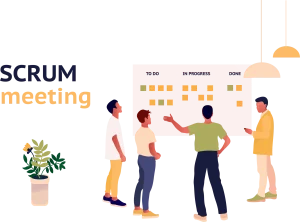Meeting notes are more than just a simple record of what was discussed during a meeting; they can also serve as a vital tool for ensuring that the outcomes of the meeting translate into specific actions. With careful design, meeting notes can enhance the efficiency and decision-making quality of a team, thereby advancing projects.
Defining Clear Action Items
Clear Assignment of Tasks
Each action item must specify a responsible person. This ensures that there is a clear owner for each task, increasing the likelihood of its completion. For instance, if a meeting decides to develop a new marketing strategy, the task might be assigned to the head of the marketing department with a completion deadline set for three weeks.
Setting Specific Deadlines
Setting clear deadlines for each action item is essential. This helps team members manage their time and ensures tasks are completed on schedule. For example, if a report needs to be prepared, explicitly stating that the submission deadline is October 15th is crucial.
Tracking and Updating
Using Digital Tools for Tracking
Adopting digital tools to track the progress of tasks allows team members to update and view the status of tasks in real-time. This transparency helps identify and address potential obstacles promptly.
Regular Review of Meeting Notes
Regularly reviewing meeting notes and the progress of action items is key to ensuring all tasks are completed on time. For example, the team could hold a follow-up meeting every two weeks to review the status of tasks and update the meeting notes.

Optimizing Decision-Making Process
Recording Key Decision Basis
Documenting the data and rationale behind decisions can help in making informed decisions. This involves listing specific figures such as costs, efficiency metrics, budget constraints, dimensions, specifications, lifespan, age, value, time considerations, advantages, materials quality, speed, and potential disadvantages. For instance, if the decision to invest in new software is based on its ability to improve efficiency by 20% within a six-month period, documenting this rationale helps in future assessments of the decision's impact.
Incorporating Feedback Mechanisms
Including a section in the meeting notes for feedback on decisions and action items encourages continuous improvement. This could involve soliciting feedback on the effectiveness of actions taken or decisions made, allowing for adjustments in future strategies.
By following these guidelines, meeting notes can transform into powerful tools for action and decision-making, ensuring that meetings have a tangible impact on project progress and team efficiency.
